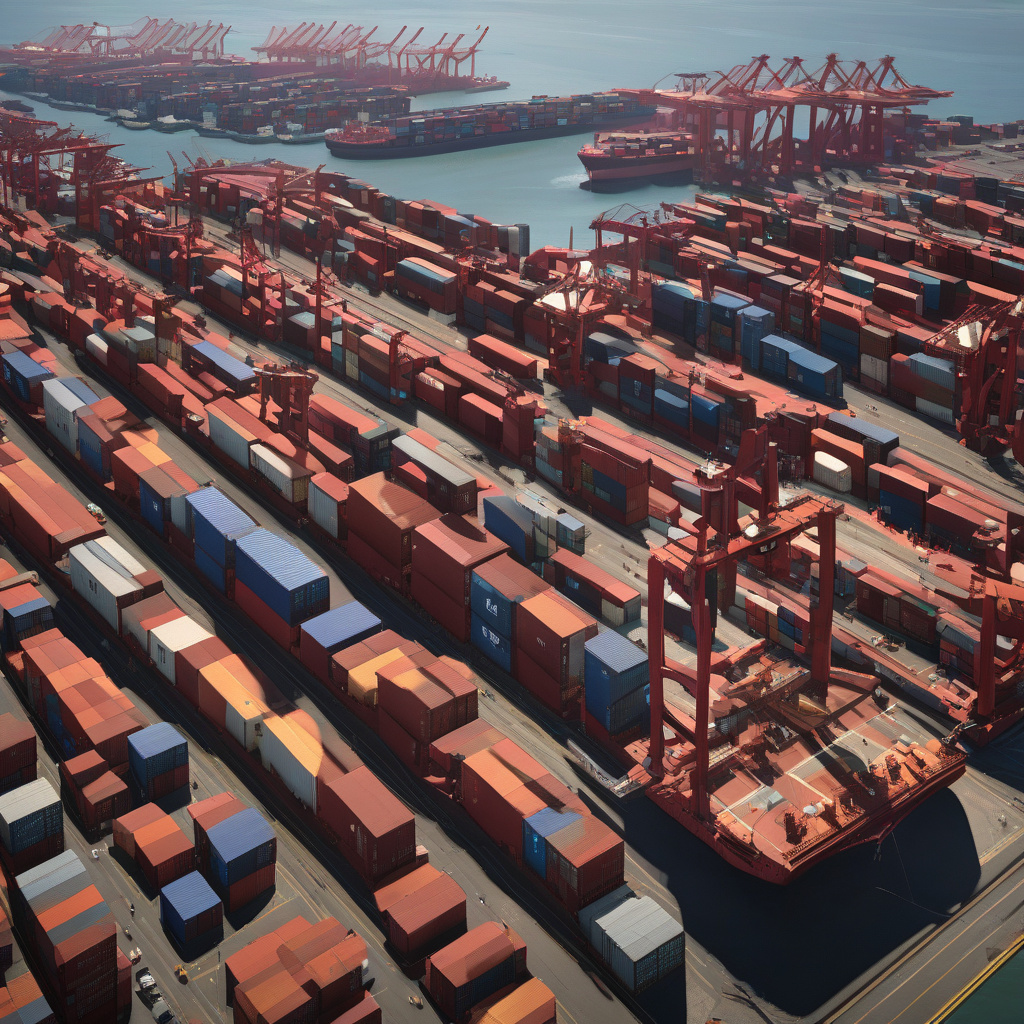Trump Tariffs Spark Sharp Decline in Shipments to US Ports
The repercussions of Trump’s tariffs are becoming increasingly evident as the number of vessels set to dock at the Port of Los Angeles next week has plummeted by nearly a third compared to the previous year. This stark decline in maritime traffic underscores the far-reaching impact of trade policies on the logistics and shipping industry.
The Port of Los Angeles, known as America’s gateway to the Pacific Rim, serves as a vital hub for trans-Pacific trade, facilitating the movement of goods between the United States and key trading partners in Asia. However, the recent downturn in vessel arrivals signals a significant shift in trade dynamics, potentially reshaping global supply chains.
The imposition of tariffs by the Trump administration has triggered a ripple effect across industries, compelling companies to reassess their sourcing strategies and navigate a complex landscape of trade barriers. With escalating trade tensions between the US and major trading partners such as China, businesses are grappling with uncertainty and volatility in the global trade environment.
The decline in shipments to US ports is not an isolated incident but rather part of a broader trend reshaping the logistics industry. Companies are exploring alternative routes and transportation modes to mitigate the impact of tariffs and trade disruptions. From air freight to rail transport, businesses are seeking innovative solutions to navigate the turbulent waters of international trade.
Moreover, the shift in vessel arrivals at major ports like Los Angeles underscores the need for agility and adaptability in supply chain management. Companies that can quickly pivot and adjust their logistics strategies in response to changing market conditions will be better positioned to weather the storm of trade uncertainties.
In light of these developments, industry players are increasingly turning to technology to enhance visibility and efficiency in supply chain operations. From blockchain to AI-driven analytics, digital solutions are empowering businesses to optimize their logistics networks and streamline operations in the face of trade challenges.
Despite the current challenges facing the shipping industry, there are opportunities for innovation and growth amidst the turmoil. By embracing digitization and data-driven insights, companies can gain a competitive edge and navigate the complexities of global trade with greater resilience.
As the trade landscape continues to evolve, industry stakeholders must stay attuned to market trends and regulatory developments to proactively address challenges and seize opportunities for growth. By fostering collaboration and innovation, the logistics sector can overcome the hurdles posed by tariffs and trade tensions, paving the way for a more resilient and agile supply chain ecosystem.
In conclusion, the decline in vessel arrivals at the Port of Los Angeles serves as a stark reminder of the profound impact of trade policies on the shipping industry. As companies navigate a turbulent trade landscape, embracing innovation and leveraging technology will be key to driving success in the face of uncertainty.
tariffs, trade, logistics, supplychain, innovation












